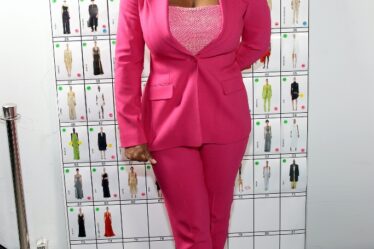
For the last 10 years, H&M’s “Conscious” collection has promised shoppers a more responsible choice. This month, the label was pulled from shelves and online listings.
Its abrupt removal is fallout from a wide-ranging greenwashing crackdown that’s forcing a rapid rethink in the way brands market goods they say are more sustainable.
Though rarely a talking point a few years ago, growing consumer appetite for products that can claim a lower environmental impact or better social outcomes has helped fuel a frenzy of sustainability marketing from all corners of the fashion industry.
In September British ultra-fast-fashion brand Boohoo launched a campaign positioning Kourtney Kardashian as its new “sustainability ambassador.” Meanwhile China’s Shein, often criticised as a symbol of wasteful overconsumption, has coupled its meteoric rise with splashy commitments to tackle its impact — a move straight out of the standard-issue industry playbook.
But the eco-marketing free-for-all that has prevailed in recent years is facing a reckoning, with regulators taking aim at vague, unsubstantiated and misleading claims.
Consumer authorities in the Netherlands and Norway have halted a number of high-profile campaigns this year, H&M’s among them; Asos and Boohoo are among companies whose marketing is under investigation in the UK; the European Union is set to lay out rules on how brands should back up green claims at the end of this month.
While much of the action is centred around Europe, brands have faced class action lawsuits for alleged greenwashing in the US, and consumers are increasingly alert to the issue globally. Regulation in one jurisdiction is likely to affect behaviour more broadly.
That’s left brands facing a rapidly changing regulatory landscape, with the bounds of what’s acceptable still shifting.
At Sweden’s H&M, a new sustainability marketing strategy is still a work in progress. Its “Conscious” label is gone, but so are the environmental scorecards for materials that it introduced last year. Those were intended to underpin a shift the company was already trying to make towards more data-driven and precise communication — until regulators concluded this year that the widely used ratings tool they rested on was not robust enough.
It’s an environment the industry must navigate carefully to avoid reputational damage, costly marketing overhauls and fines.
“We have a dedicated team working on it,” said H&M’s head of sustainability Pascal Brun. “We have also to adapt to the situation; what is true now might not be true in six months. The industry is moving pretty fast right now for good reason.”
Finding a New Language
For the last five years, French luxury conglomerate Kering has published a set of standards to guide its brands and their suppliers on best practices for sourcing raw materials and manufacturing in line with the company’s sustainability ambitions, which chairman François-Henri Pinault has called “inherent to luxury.” This year it added guidelines on marketing claims.
The move was both a response to a growing number of requests for help from brands and intended to preempt the wave of regulation moving through Europe. “There is a lot of confusion,” said Antonella Centra, general counsel and head of corporate affairs and sustainability at Gucci, Kering’s biggest brand.
Gucci has set up a panel of external experts to help ensure advertising claims have been verified and have substance behind them. Parent company Kering’s instructions tell brands to avoid buzzy, but vague marketing terms and instead focus on precise language, clearly contextualised and supported by evidence.
The recommendations mirror regulatory guidelines and policies already in place or set to come into force in some key markets. For instance, describing a product as biodegradable is banned in France, where claims about “carbon neutrality” of products or services will be strictly regulated from next year.
The changes in the way brands talk about sustainability are still filtering through the market, but the language companies use is changing palpably.
“We used to see a lot of really vague terms like “eco-friendly” or “sustainable” or “green packaging” or whatever, but there wasn’t much substance to what brands were claiming,” said Emilie Carasso, global footprinting lead at consultancy Quantis. “We’re seeing brands are becoming more specific and more complex in what they claim.”
The Great Greenhushing
Not all brands are taking the current shake down as an opportunity to step up. Instead, there is a risk that many simply clam up, industry insiders said.
While stated consumer demand for more ethical and environmentally responsible products has fuelled fashion’s eco-marketing surge, it hasn’t consistently reflected actual purchasing behaviour. That’s left some companies to conclude that growing regulatory scrutiny creates a risk that isn’t worth taking.
“We act for a lot of consumer brands and retailers and it’s up there with the top five things people are talking about and concerned about,” said Ciara Cullen, a partner at law firm RPC. In some cases, companies are responding by upskilling existing team members, hiring experts and building deeper ties between marketing teams, policy specialists and legal compliance departments. “The other extreme is that there are some brands, particularly smaller ones, that are just in absolute fear of getting it wrong,” Cullen said.
Even where companies don’t give in to this kind of “greenhushing,” brands argue the regulatory deluge risks dampening commercial incentives for the industry to invest in more responsible practices by making associated products less accessible and appealing.
By and large, when consumers do actually shop their stated values, they search using the broad buzzwords regulators frown upon. And in marketing, “when you try to go more technical it becomes immediately boring,” said Gucci’s Centra. The brand’s social posts that talk about environmental or social topics have limited engagement. “This is something we need to change,” she said.
Striking the balance between accurate and transparent information and buzzy branding is something fashion will need to get better at, regulators say. “The wrong information is worse than no information,” said Tonje Drevland, head of the Norwegian Consumer Authority’s supervisory department. The consumer watchdog has a number of open investigations into fashion brands and is looking at imposing fines for those found to mislead consumers.
The Battle for Standards
The current climate of caution is likely to remain as long as there’s no common, agreed upon standards for how brands should back up green claims.
For instance France is set to require brands to put environmental impact labels on clothes and footwear from next year, but companies say exactly how that should be calculated has yet to be defined. Existing methodologies have faced fierce criticism from environmental activists, as well as some industry groups and consumer watchdogs.
The issue is coming to a head at the European Union level, where policymakers are leading efforts to establish a framework to measure products’ environmental impact.
Environmental advocacy groups and lobbies for natural fibres like wool are vocally critical of the proposal currently working its way through the European Commission in Brussels, arguing it fails to take into account critical issues like social impact or the full life cycle of a garment, relies on inadequate and inconsistent data and has been too influenced by the industry’s own interests.
Brands are also stepping up their lobbying efforts, pushing for an agreed upon set of standards, even an imperfect one.
“It has never been as important as it is now how we communicate, how we disclose, how we build trust… we need to align on one standard,” said H&M’s Brun. “We will be scrutinised and criticised as long as there is no regulation… we need to put the bar a bit higher than what it is.”



